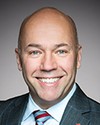We have piloted and evaluated phase 1, which is for 10- to 12-year olds. That was the work that took place with our 12 pilot communities, with the preface that it's an upstream prevention program. Looking really long term, we can't tell you that it's preventing suicide right now. What we can tell you is the biggest learning that came out of that phase 1 evaluation was that kids had no idea about our history. It really gave them an opportunity to learn maybe why their community was the way it is, why maybe their parents got some things...it gave them an opportunity to have a deeper understanding of who they were. That was really neat to see. It's a history that a lot of Canada doesn't know, but it's a history that a lot of our own people don't know. That was the main learning that came out of Cuystwi phase 1.
Phase 2 is a part of a youth participatory Ph.D. dissertation project that's happening right now out of the University of British Columbia with Cowichan Tribes. They're looking to evaluate that program with that group of youth, and it just started this fall. We're really excited to see where that goes. They have a bunch of awesome young kids who are in high school, around 18 or 19 years old. They are taking ownership of the project and are going to be doing it that way.
I want to quickly say, it totally depends how you measure success. We really believe that communities need to be involved in determining what success looks like for them. It can't be something external, where we're saying success only looks like this, when we're not the ones living there. I think there are lots of different ways to measure success that aren't necessarily the typical ways.



